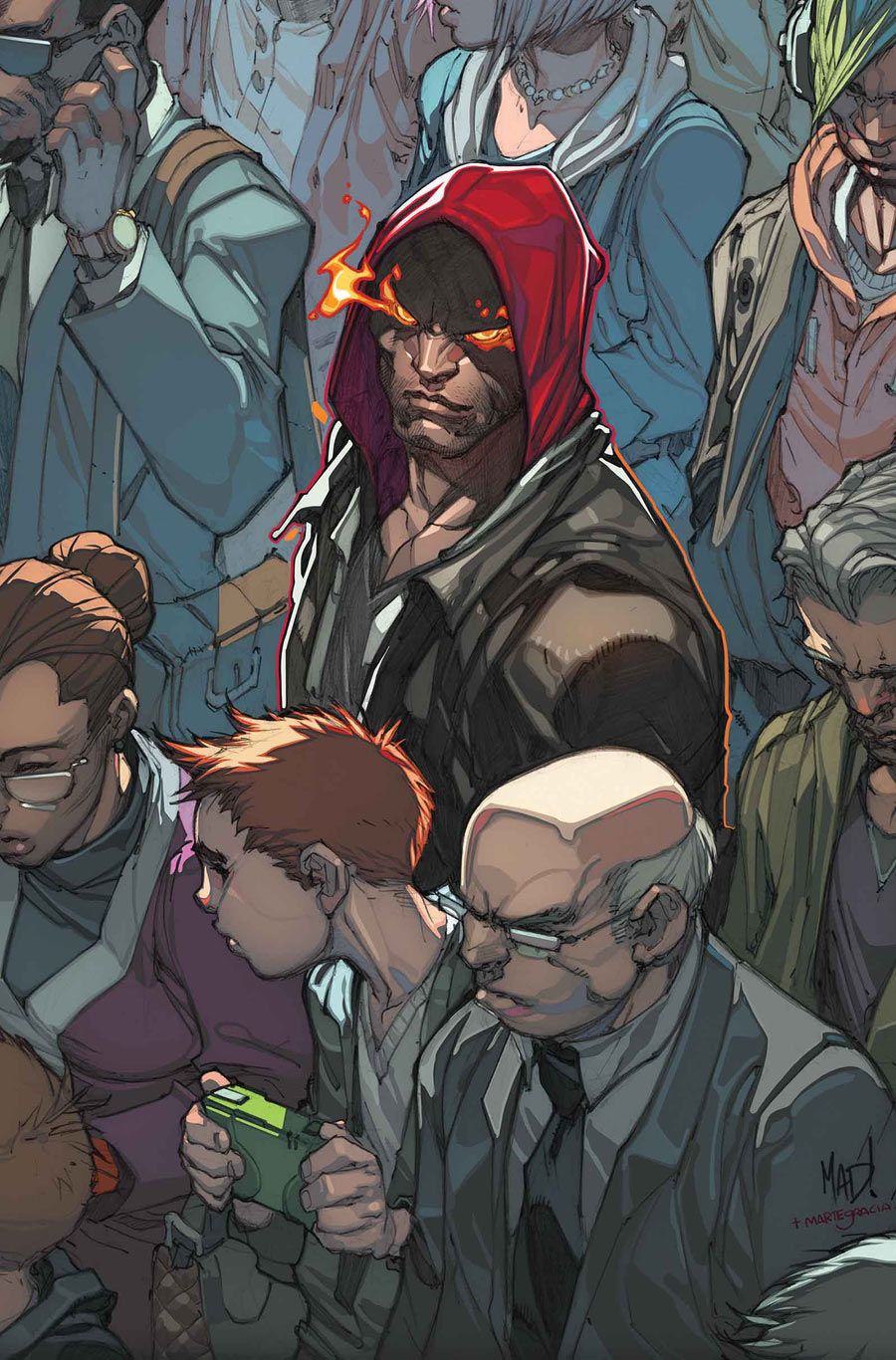After a series of setbacks, "Inhuman" -- now helmed by Charles Soule and Joe Madureira -- has finally hit the stands. Soule and Madureira explore the far-reaching effects of the Terrigen mist bomb at street-level, using Queen Medusa and new villain Lash as tools of naturalistic exposition to familiarize readers with Inhuman society. With engaging character work, "Inhuman" #1 ultimately suffers from a confusing timeline of events and underwhelming artwork.
If there is any reason to pick up this book, it's for the characters. In particular, Soule's work with Lash absolutely steals the story. Coming from one of the previously unknown Inhuman splinter cells, Lash was a blank canvas with which to work and Soule uses him masterfully. He instills Lash with a religious fervor that without labeling it as such; however, Lash's dialogue and actions come across as purposeful and deliberate. He has absolute, palpable faith in the validity of his work and that makes him a truly terrifying villain: he sees himself as the hero of his own story. Similarly, the aptly named Dante leaps fully formed off the page. Within a few short panels, it's impossible not to like him. His conversation with his sister Gabby reveals just enough information about him to make readers care while feeling incredibly natural; meanwhile, the events of the issue give him motive enough to make his story interesting. With Soule's impressive guidance, readers will be fully invested in the characters by the issue's conclusion.
Outside of the characters, however, the story falls apart. For one, the timeline is out of joint in that the Terrigen mists manage to reach Norway before they hit Illinois. (If this was simply a delayed effect for Dante, Soule never goes into the matter or takes the time to explain it here.) Likewise, the issue's pacing starts needlessly slow and escalates suddenly with a rather rushed conclusion.
Madureira brings a clear, distinct look to the issue with incredible attention to detail and eye-catching backgrounds. However, his shading work retains an unmistakably markered look. Where Marte Gracia's gorgeous coloring is so bright and clean, Madureira's lighter, textured shading is put in sharp contrast. The overall effect is messy; if anything, the book looks unfinished because of it. It's especially obvious with Medusa, whose face is regularly cast in shadow throughout the story, while her face is framed by the vivid red of her hair. Likewise, Medusa's posturing is painfully twisted and unrealistic, whether she's sitting in bed, addressing S.H.I.E.L.D. officers, or fighting for her new subject. Madureira's Medusa looks fragile; her thin frame often gets swallowed by her hair, yet somehow still manages to emphasize her chest and her hips (with an impossible thigh gap, to boot). She shrinks even further in comparison to Lash, which makes their entire fight sequence laughable in its insistence that she could ever hope to subdue him, even with her abilities. In all, with some nice patches of work here and there, Madureira only manages to disappoint with this book.
Unfortunately, "Inhuman" #1 doesn't live up to the hype that surrounded its release with its jumbled timeline and poor artwork. However, Soule leaves plenty of room for potential with compelling and enduring characters.

